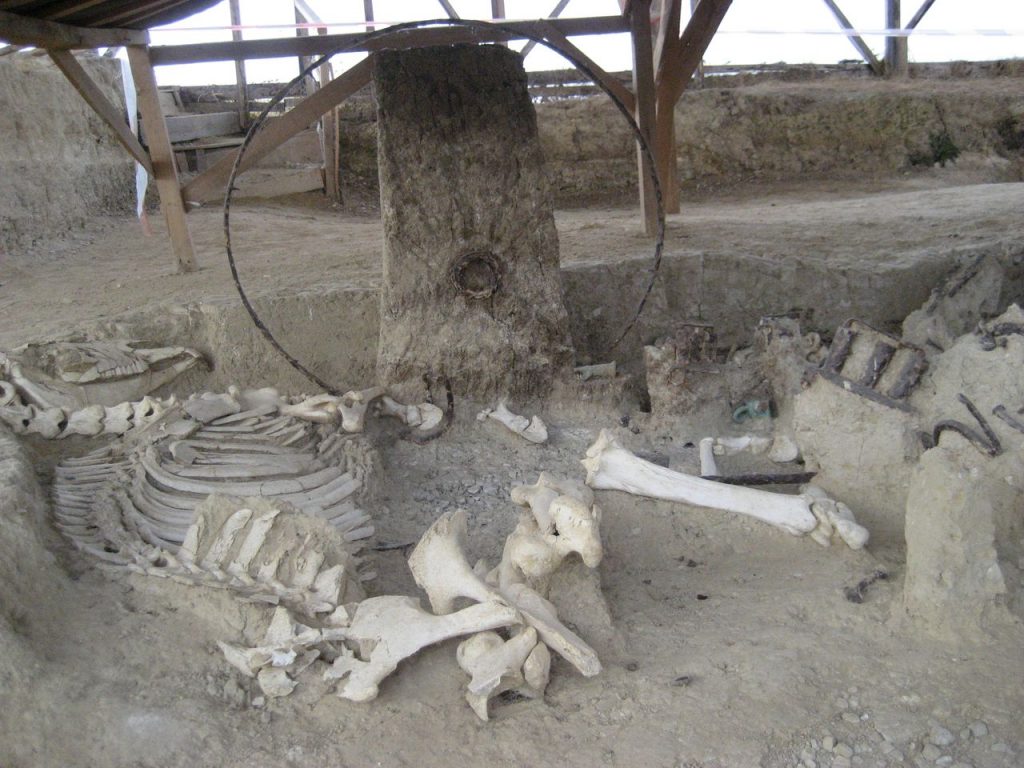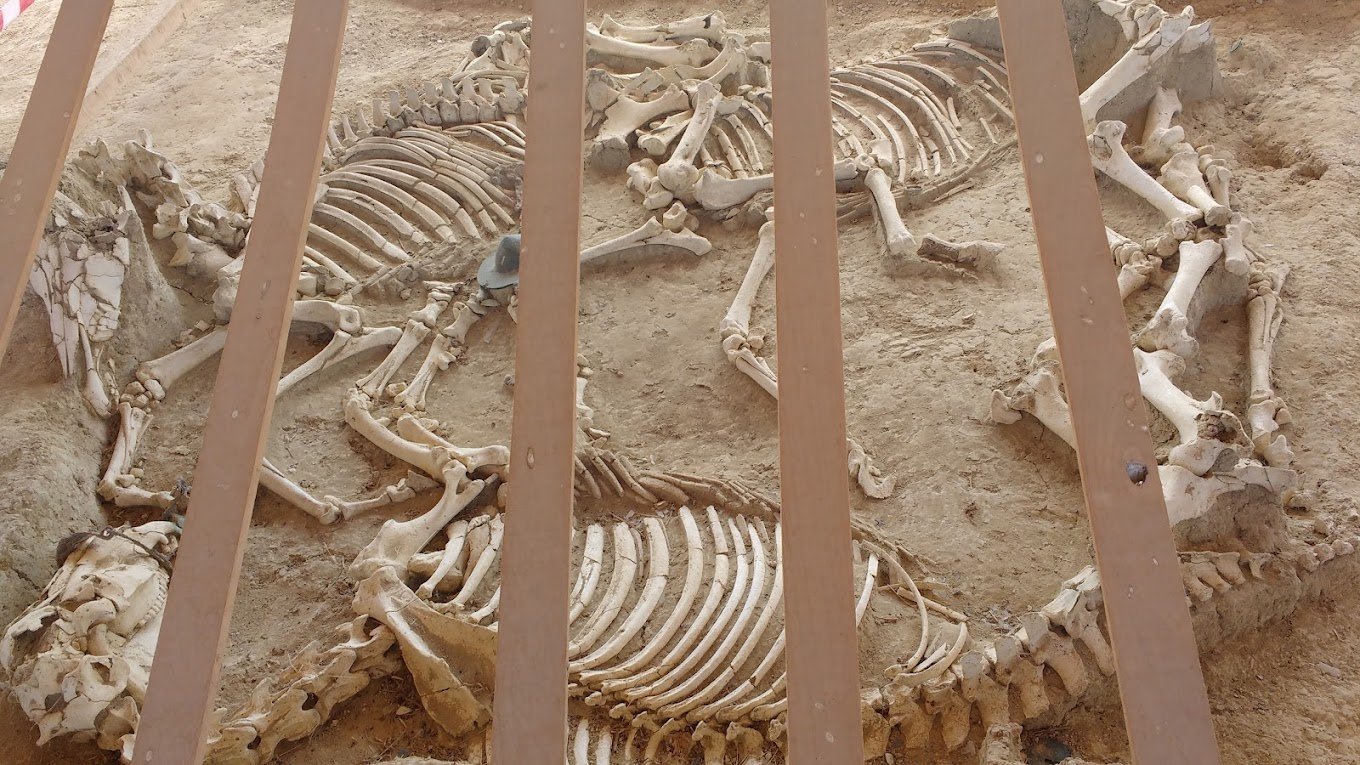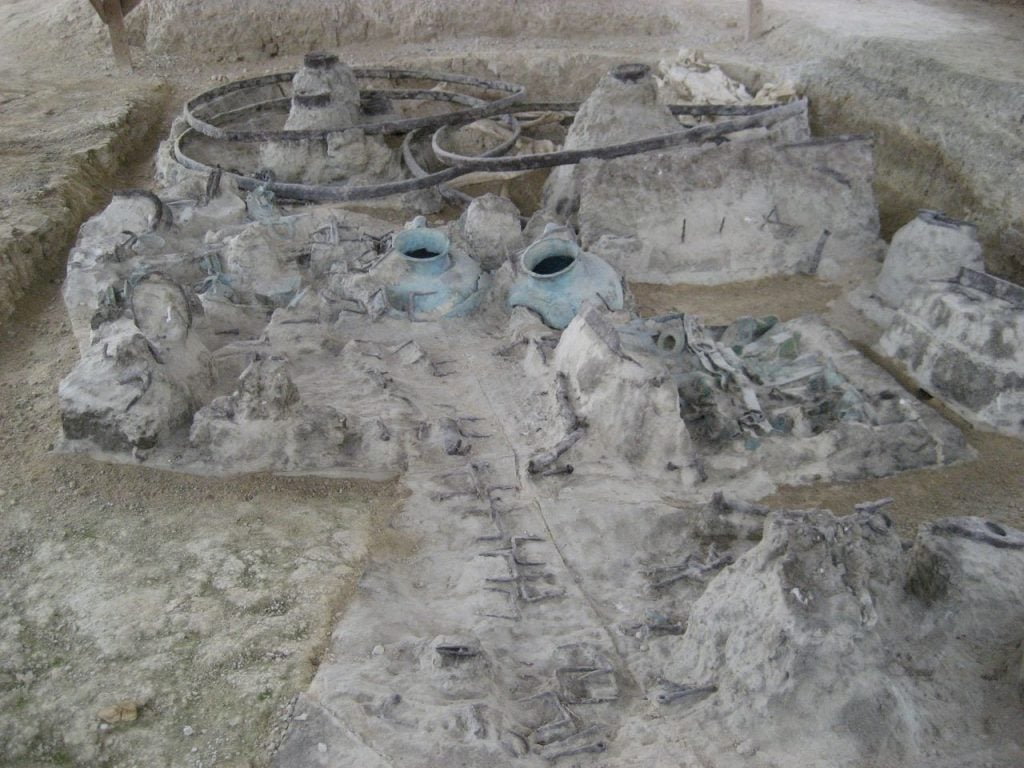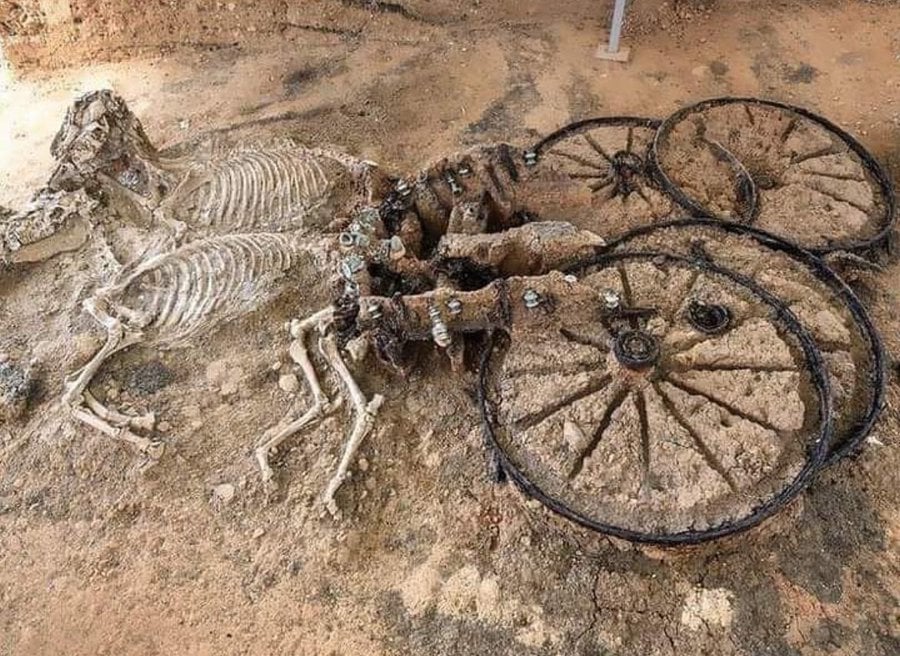
Several years ago, a grave with human remains plus chariots and horse skeletons was discovered in Thrace in northeastern Greece.
Archaeologists said the grave from the beginning of the 2nd century AD contained the remains of four members of a rich landowning family that was cremated and buried along with five chariots and five horses.
Today, a museum is being built at the ancient burial site of Doxipara, located in Evros, which will include the remains and many artifacts from the excavations over the decades.

On-site, four large pits were discovered which contained the cremated remains of three males and one female along with numerous offerings to accompany them into the afterlife, such as clay, glass and bronze vessels, bronze lamp stands and lamps, bronze lanterns, weapons, jewels and wooden boxes.

The five wagons with which the dead had been brought to the site were buried in the same location along with their horses. A further five horses were buried close by. Metal decorations and metal parts of the mechanism of all the wagons remain while in two cases impressions of the wooden parts have been preserved.
The excavation of the burial tumulus started in 2002 after many attempts to destroy the tumulus and plunder the contents.
Horses and chariots held immense significance in Thracian society, playing pivotal roles in both practical and symbolic contexts.
The Thracians were renowned for their horsemanship and cavalry tactics, and horses were revered as symbols of power, prestige, and strength.
Chariots, on the other hand, represented not only technological advancement but also status and authority. In ancient warfare, chariots were formidable military assets, and their association with elite warriors and nobility elevated their cultural importance.
Burial of horses with chariots in Thrace
Doxipara is the only place in Greece where a grave containing the remains of people, horses and chariots has ever been discovered.
However, similar graves have been discovered in other parts of Thrace, and Bulgaria in particular. In 2008, Bulgarian archaeologists discovered a 2,000-year-old wooden chariot covered in bronze and decorated with scenes from Thracian mythology.

What distinguishes this discovery is the exceptional size of the chariot’s wheels, measuring approximately 1.2 meters, 4 feet in diameter. Alongside the chariot, the burial site revealed the Thracian nobleman himself, surrounded by the animals and accompanied by wooden and leather artifacts believed to be horse harnesses.
The man was buried with several items, including gold coins, gold rings and a silver cup showing a depiction of the Greek god Eros (the Roman equivalent was Cupid). He would have been a nobleman or possibly even a ruler who lived in ancient Thrace, in what is now Bulgaria.
Though the people of some other regions of the Roman Empire also sometimes buried their noblemen near chariots, this practice was by far most popular and long-standing in Thrace, archaeologist Veselin Ignatov said.
“In all cases, the chariots represent prestige, power, and authority,” Ignatov added, noting that the chariots were probably intended to be used by the deceased in the afterlife.
At the time of the burial, the horses that pulled the chariot likely would have been killed. Animal offerings such as pigs, dogs, sheep and deer would have been made to the gods, along with libations (such as wine), Ignatov wrote. Sometimes, the chariots themselves were dismantled or smashed apart before being buried
The Thracians, mentioned in Homer’s ‘Iliad’ as allies of the Trojans in their war against the Greeks, were renowned as fierce warriors, adept horse-breeders, and skilled goldsmiths.
Establishing a robust kingdom in the fifth century B.C., they eventually succumbed to Roman conquest in the first century and later integrated into Slavic communities during the 6th century.
See all the latest news from Greece and the world at Greekreporter.com. Contact our newsroom to report an update or send your story, photos and videos. Follow GR on Google News and subscribe here to our daily email!



